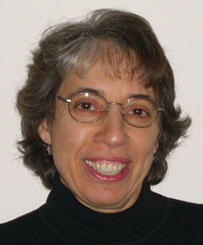 C.G. Jung Society, Seattle
C.G. Jung Society, Seattle C.G. Jung Society, Seattle
C.G. Jung Society, SeattleLecture: Friday, February 10, 2012, 7 to 9 p.m.
Good Shepherd Center, Room 202, 4649 Sunnyside Ave. North, Seattle 98103 (driving directions)
$15 members, $25 nonmembers
 Workshop: Saturday, February 11, 2012, 10 a.m. to 2:30 p.m.
Workshop: Saturday, February 11, 2012, 10 a.m. to 2:30 p.m.
Good Shepherd Center, Room 202, 4649 Sunnyside Ave. North, Seattle 98103
$50 members, $70 nonmembers
Advance registration for workshops is encouraged. You can mail your registration and payment to our office using this registration form or buy tickets for the lecture and workshop in advance at brownpapertickets.com.
In the Friday evening lecture there will be an overview of this historical and universal sym-bol. We will enquire into its presence in ancient cultures as well as in western alchemy.
Uroboric questioning: What meaning does the Uroboros have for us in these times? The Uro-boros, depicted as a dragon or a serpent de-vouring its own tail, stands for the alpha and the omega, the beginning and the end of all things. Spirit and matter, masculine and femi-nine, poison and panacea—the opposites unite in this ancient symbol of the opus circulatorium.
In the Saturday workshop we will look in greater depth at the developmental psychological implications of the Uroboros. We will address it from the perspective of other theoretical orientations as a significant state in the narcissistic personality when it is arrested and again when the uoroboric state is essential in the process of transformation and individuation.
We will explore the permutations of the Uroboros: its dreams of omnipotence; the levels of differentiation of the ego’s emergence from the unconscious; its outward relationship to others and to the collective; thence to the self and the collective unconscious. While each aspect has relevance to the development of the individual, parallels exist between individuation and the maturation process of society, culture, and the state of our civilization as we grapple collectively with the developmental crises of our era. The Uroboros provides a mythological con-nection to the natural world, and allows us to bring scientific and imaginal perspectives together, drawing upon the strengths of depth psychology and clinical practice. The alchemical world view allows us to see and experience the interconnectedness of conscious spirit, unconscious spirit, unconscious matter, and conscious matter, through which we recognize the presence of the anima mundi.
Learning Objectives:
1. To learn about the archetypal and alchemical symbolism of the Uroboros.
2. Compare and contrast the developmental stages of the self according to C. G. Jung and developmental theorists.
3. To look at processes of self-assimilation and self-generation from a teleological perspective distinct from pathological narcissism or self-absorption.
4. To understand how the alchemical world view, which includes Conscious Spirit, Unconscious Spirit, Un-conscious Matter, and Conscious Matter assists us in coping with the changes in our times.
Bette R. Joram is a psychotherapist in private practice in Seattle, Washington, and an adjunct faculty member of Antioch University Seattle. She received her Ph.D. from Pacifica Graduate Institute in 2005. This subject matter is drawn from her doctoral dissertation, Experientia Testi Est, a hermeneutic study of transformation and change based on the illumined al-chemical manuscript, Les Vaisseaux D’Hermes. The image of the Uroboros figures significantly in this work.
This program has been approved for CEUs by the Washington Chapter National Association of Social Workers (NASW) for Li-censed Social Workers, Licensed Marriage & Family Therapists and Licensed Mental Health Counselors. Provider number is #1975-157. The cost to receive a certificate is as follows: 6 units for Friday lecture and Saturday workshop $15; $10 for 2 units on Friday; $10 for 4 units on Saturday.
Updated: 2 January, 2012
webmaster@jungseattle.org